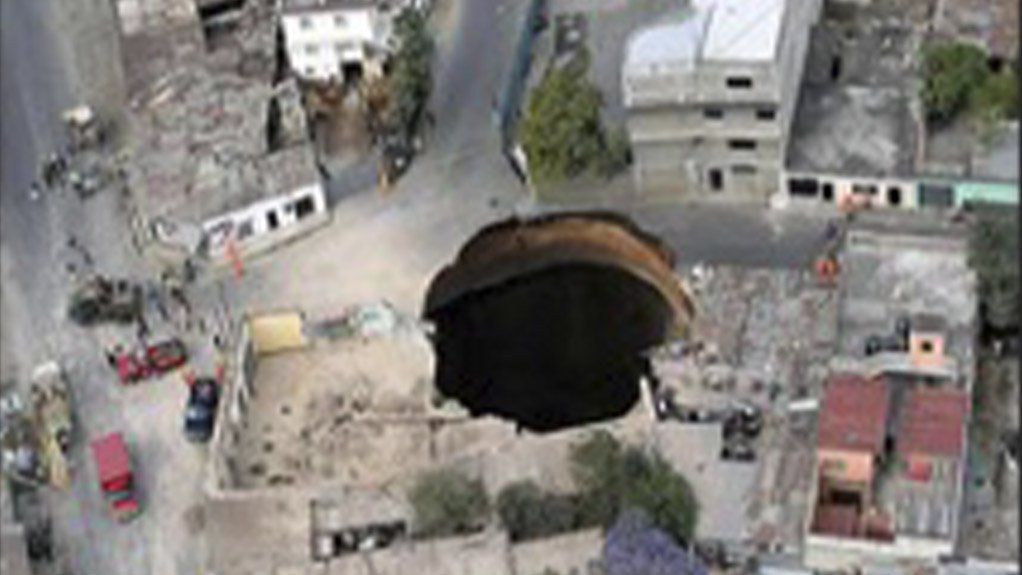
(Showroom): Most individuals, especially in the Centurion area, has been forced to become acquainted with several sudden depressions / caves, and or cavities occurring in the surrounding areas. These occurrences are better known as the formation of sinkholes. Sinkholes in the modern times has caused significant damage to buildings, infrastructures and roads, sometimes bringing traffic to a standstill at various interchanges and highways. To better understand this, it is important to take note of the definition of sinkholes.
Sinkholes forms when the underlying bedrock weathers and forms a depression / cavity until the upper soils and material are not supported enough, resulting in the surface collapsing into the weathered hole that had formed. This can be directly below the surface or a few hundreds of meters down. Over long periods of time, interconnected underground cave systems, channels and cavities has eroded to such an extent that large sinkholes form. This commonly takes place where dolomite and limestone bedrock are the dominant sub-surface material. Dolomite has a chemical composition of Calcium, Magnesium and Carbonate. Limestone has a similar composition, with less Magnesium content, but also has the same impacts when exposed to weathering. Given sufficient time and the correct triggering mechanisms, instability may occur naturally, but is expedited many orders of magnitude due to man’s activities. Two main aspects contribute to the weathering of the Dolomite / Limestone bedrock:
- Fluctuating water levels, due to dry or rainy seasons as well as regional dewatering through activities such as mining.
- Infiltration from leaking pipes or poor stormwater drainage and management.
This enhances the weathering and eroding rates of the bedrock material, with acidic water acting as a catalyst for these reactions.
Various strategies to minimize and manage the risk for people living on Dolomite can be implemented.
- Leaking pipes are to be fixed and quickly stopped.
- Good drainage and water management practices should be implemented to avoid the ponding of water.
- Regional abstraction activities should be closely monitored.
Approximately 25% of the Gauteng Province, as well as parts of Mpumalanga, Limpopo, Northwest, and Northern Cape Provinces, are underlain by dolomite.
Environmental Assurance focus on assisting our clients to conduct specialist studies in a vast field of environmental disciplines. For dolomite risk management, geohydrological-, geophysical- and monitoring services, please do not hesitate to contact our highly qualified specialists for a proposal on 012 460 9768 or info@envass.co.za.